january  2010
2010
 I was terribly sad to hear that the great Howard Zinn, historian, professor and activist, died last night at the age of 87. Noam Chomsky, Naomi Klein and Alice Walker were gathered before dawn this morning to memorialize him along with Amy Goodman on Democracy Now. The impact and influence of his most important work, A People's History of the United States, is incalculable. Since its publication in 1980, he lived to see it taught in schools, in some cases replacing the textbooks it sought to refute, as well as brought to life last year on the History Channel.
I was terribly sad to hear that the great Howard Zinn, historian, professor and activist, died last night at the age of 87. Noam Chomsky, Naomi Klein and Alice Walker were gathered before dawn this morning to memorialize him along with Amy Goodman on Democracy Now. The impact and influence of his most important work, A People's History of the United States, is incalculable. Since its publication in 1980, he lived to see it taught in schools, in some cases replacing the textbooks it sought to refute, as well as brought to life last year on the History Channel.
One of my elective/non-art-related classes my first year in college was on A People's History. Aside from the unforgettable opening passage that imagines Christopher Columbus' ships arriving on the east coast from the perspective of a Native American tribe watching apprehensively from the shore, the thing I remember most is that the book mentioned my ancestor Mary Dyer.
 I had only ever heard about her from my family. There was no Internet back in the 80s and the 17th Century colonial era isn't one of the more television-friendly periods in American history — not like the Civil War or the Old West anyway — so I thought about Mary Dyer the same way you think about any family legend.
I had only ever heard about her from my family. There was no Internet back in the 80s and the 17th Century colonial era isn't one of the more television-friendly periods in American history — not like the Civil War or the Old West anyway — so I thought about Mary Dyer the same way you think about any family legend.
It was a good story and it put certain things in perspective, like my mother's fondness for uttering "they still burn witches" in a cautionary tone. To this I would occasionally reply by re-framing our metaphor, reverse Arthur Miller-like, in the 20th Century; "Don't worry, I won't name any names!" In all fairness, this was not just her way of putting a melodramatic twist on "don't rock the boat." Specific examples escape me at the moment but it's safe to assume that whatever behavior of mine prompted the comment was probably pretty witchy.
I would love to write more about Howard Zinn right now but I am very tired and must go to bed. I will instead borrow, and heartily second, these parting words from the eminently quotable Naomi Klein:
"He was everybody's favorite teacher, the teacher that changed your life, but he was that for millions and millions of people. And so, you know, that's what happened. We just lost our favorite teacher. But the thing about Howard is that the history that he taught was not just about losing the official illusions about nationalism, about the heroic figures. It was about telling people to believe in themselves and their power to change the world. So, like any wonderful teacher, he left all of these lessons behind. And I think we should all just resolve to be a little bit more like Howard today."
One of the things I like most about my job — actually the thing I like most about my job, by far — is that I get to interview people. It's a cliche that everyone is interesting in their own way, and I'm not even sure if it's true, but it is true that if you ask the right questions you will get at the most interesting things a person is willing to reveal. When I first started doing this, I wasn't sure what to ask. So I asked about what I personally wanted to know — their background, their tastes, their education and work experiences, who they admire, what they obsess about, what they think about life in general — all without getting too personal or political... although, fortunately, their answers often do.
 I even bought a book called 4,000 Questions for Getting to Know Anyone and Everyone (by Barbara Kipfer). There are a lot of questions I'd love to ask but simply can't justify it in a work setting, and many more that can't be justified outside of a close-knit circle of friends, but there are some that seem almost foolproof; timeless, intriguing questions you could ask just about anybody and get an interesting answer. For example, "what was your worst haircut ever?" See? Reading those words just now, you were thinking about your worst haircut ever! Granted, some people will just laugh and tell you they can't remember, leaving you to imagine whether it was a mullet, a Flock of Seagulls, a Top Ramen perm or a hightop fade...
I even bought a book called 4,000 Questions for Getting to Know Anyone and Everyone (by Barbara Kipfer). There are a lot of questions I'd love to ask but simply can't justify it in a work setting, and many more that can't be justified outside of a close-knit circle of friends, but there are some that seem almost foolproof; timeless, intriguing questions you could ask just about anybody and get an interesting answer. For example, "what was your worst haircut ever?" See? Reading those words just now, you were thinking about your worst haircut ever! Granted, some people will just laugh and tell you they can't remember, leaving you to imagine whether it was a mullet, a Flock of Seagulls, a Top Ramen perm or a hightop fade...
The "worst job ever" question, at least since the Industrial Revolution, is probably one of the few universal conversation starters. Similar to the haircut question, it sparks a flood of memories and, perhaps unlike their worst haircut, most people won't hesitate to launch into a diatribe on their worst job ever. I'd even go as far as to say that anyone who doesn't have at least one "worst job ever" story is probably not to be trusted.
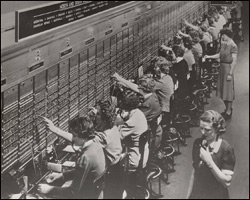 Most of my bad jobs were bad because they were boring. Like the one where my position seemed to have been created for the sole purpose of providing the manager of my department with someone to manage. When I left the company a year later, there were four of us sitting around almost every day with absolutely nothing to do while our boss darted around trying to make herself look busy whenever her boss was in town. When he wasn't in town, she would disappear in the middle of the day, then call from her cell phone after hours and leave long, rambling voice mail messages so we would think she had come back to the office to work late into the night.
Most of my bad jobs were bad because they were boring. Like the one where my position seemed to have been created for the sole purpose of providing the manager of my department with someone to manage. When I left the company a year later, there were four of us sitting around almost every day with absolutely nothing to do while our boss darted around trying to make herself look busy whenever her boss was in town. When he wasn't in town, she would disappear in the middle of the day, then call from her cell phone after hours and leave long, rambling voice mail messages so we would think she had come back to the office to work late into the night.
Then there were the bad temp jobs; two weeks at the reception desk of a company that no one ever visited and fewer than ten people called on any given day. After a while they took pity on me and told me I could bring a book if it would help to pass the time. It did, but more importantly, it saved everyone in the office from feeling the need to make apologetic small talk with me every time they passed me on their way to the bathroom.
Then there were two weeks spent at makeshift cafeteria tables tucked away in a featureless back hallway of an accounting office with three other temps. We spent eight hours a day working our way through a dozen four-foot tall stacks of transaction log books, hunched over one encyclopedia-sized stack at a time, adding up all the transactions on a manual calculator, then adding them all again, then checking both totals and if they didn't match up, going through the six-foot long rolls of tape side by side until you spotted the error. When you finally got the two tapes to match, you'd circle the total in red, secure the tapes to the top of the log book, set it on top of the slowly rising stack on the other side of the hall and take another book from the pile. I've never done anything so maddeningly monotonous and painfully repetitive in all my life. And you couldn't even zone out; you had to be attentive, perfectly precise, or you'd end up adding the same stack again and again and again until you got it right. It was as close to Hell as I think I can imagine.
When I moved to Baltimore for college I spent my first two weeks rushing home every day to change clothes so I could hike down to the Inner Harbor Mall in 95-degree heat, suffocating humidity and smog that left a thin black film on my skin at the end of the day. I went from store to store, filling out as many job applications as I could before the sun went down, fanning myself with my resume and blotting at my face with powder, trying to look a little less like I had just emerged from a sauna in coal country.
Over the next nine months, I went through a string of entry-level "associate" positions at a number of badly managed big-name chains; Victoria's Secret, Gloria Jean's Coffee Beans, The Body Shop (actually that one was great but the hours were impossible with my second-year class schedule). I even worked at a mix-n-match salad and pasta lunch counter where employees averaged about two weeks before getting fired or storming out in the middle of their shift. The manager was a virulent little misanthrope who looked like a cross between Rea Perlman and the guy who played her sleazy ex-husband on Cheers.
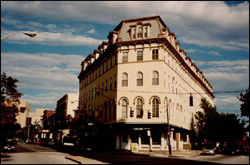 After my first year, I abandoned the mood-disordered melodramas of mall world for the promise of art school-friendly hours and better pay in the food and beverage industry. I had been working for about a month at the small brick-oven pizzeria downstairs from my new apartment — an overpriced but palatial, air-conditioned two bedroom in the beautifully renovated Albion Hotel building — when I heard from a friend that the Belvedere was looking for a cocktail waitress.
After my first year, I abandoned the mood-disordered melodramas of mall world for the promise of art school-friendly hours and better pay in the food and beverage industry. I had been working for about a month at the small brick-oven pizzeria downstairs from my new apartment — an overpriced but palatial, air-conditioned two bedroom in the beautifully renovated Albion Hotel building — when I heard from a friend that the Belvedere was looking for a cocktail waitress.
Built in 1903, The Belvedere Hotel is a Baltimore institution which once hosted the likes of Clark Gable and President Kennedy. In 1991 it was rezoned into condos and its historic 13th Floor lounge and Owl Bar, which was listed among Playboy's Top 100 Bars, was refurbished and opened for business under a deep-pocketed new proprietor.
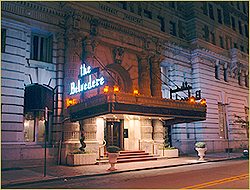 My meeting with the owner went surprisingly well, considering the warnings I had received beforehand. I told him about my previous work experience and he regaled me with his vision for the trio of bars as an oasis of unparalleled elegance and excitement in downtown Baltimore. He talked about lining the Belvedere's gilded walls with "beautiful people," whose lavish tastes would ensure a thriving enterprise. Then, a little embarrassed, he said, "You know about the, ahem, uniform?" Everybody in Baltimore knew about the uniform; fishnet stockings, black leotard, bow tie, tuxedo tails. I told him I did. He asked if I could please stand up. I did, holding my arms out to my sides and doing a little runway turn. He waved his hands, nodding that I would do just fine. Then he resumed what I would soon come to recognize as his most convincing Gentleman act, and offered me the grand tour.
My meeting with the owner went surprisingly well, considering the warnings I had received beforehand. I told him about my previous work experience and he regaled me with his vision for the trio of bars as an oasis of unparalleled elegance and excitement in downtown Baltimore. He talked about lining the Belvedere's gilded walls with "beautiful people," whose lavish tastes would ensure a thriving enterprise. Then, a little embarrassed, he said, "You know about the, ahem, uniform?" Everybody in Baltimore knew about the uniform; fishnet stockings, black leotard, bow tie, tuxedo tails. I told him I did. He asked if I could please stand up. I did, holding my arms out to my sides and doing a little runway turn. He waved his hands, nodding that I would do just fine. Then he resumed what I would soon come to recognize as his most convincing Gentleman act, and offered me the grand tour.
 What I couldn't have known at the time — and would not find out until years later — was that my interview occurred at the precise apex of a tidal wave of success that had buoyed my new employer to unprecedented heights of optimism and magnanimity. In the autumn of 1992 he had every reason to feel good about the prospects of his latest business venture. It had only been a few months since The Owl Bar reopened and the city's papers were still toasting the triumphant return of the iconic Baltimore establishment. Meanwhile the Skyline Lounge on the 13th Floor was attracting just the kind of well-dressed clientele to put the condominium board at ease about their enterprising new neighbors.
What I couldn't have known at the time — and would not find out until years later — was that my interview occurred at the precise apex of a tidal wave of success that had buoyed my new employer to unprecedented heights of optimism and magnanimity. In the autumn of 1992 he had every reason to feel good about the prospects of his latest business venture. It had only been a few months since The Owl Bar reopened and the city's papers were still toasting the triumphant return of the iconic Baltimore establishment. Meanwhile the Skyline Lounge on the 13th Floor was attracting just the kind of well-dressed clientele to put the condominium board at ease about their enterprising new neighbors.
Rounding out the trio, the glittering first-floor ballroom had been meticulously restored; christened the Renaissance Club, it would soon cater to an eclectic if cognitively dissonant mix of the owner's suburban Studio 54 crowd and the young, gay, racially diverse residents of neighboring Mount Vernon. With the grand opening still weeks away, there was an air of anticipation and goodwill surrounding the Belvedere that had not yet given way to endless streams of noise and nuisance complaints, to tense meetings with condo owners that devolved into insult- and innuendo-hurling stand-offs; to visits from the police department, the liquor board and the health inspector; to fines, threats, ultimatums, rumors of bribery and repeated revoking of licenses— to be renewed in the nick of time, in the name of yet another doomed Bar Manager. The dysfunctional familia dynamic had not yet metastasized into a manic cycle of hirings and firings and the incremental escalation of simmering discontent, explosive mid-shift walk-outs by head chefs and ugly scenes involving tearful cocktail waitresses screaming out their final lines to the crowd in the lobby on a Friday night; or bartenders caught in the act with the owner's 19-year old daughter — in a stairwell — by a horrified elderly tenant. But as our tour concluded, all these things still lay ahead, unknown and unforeseen. The owner and I shook hands and we agreed that I would start at five on Sunday.
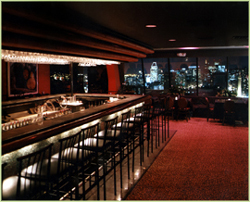 My first night in the Skyline Lounge was deadly slow and I spent its tortuous duration pacing the length of the building, straightening napkins and staring out the tall windows that lined the north and south walls. That thick, turn of the century glass must have worked its distorting magic on the Baltimore skyline, turning it into a panoramic vision of romance and elegance. There's not another vantage point in the city where everything looks quite so good.
My first night in the Skyline Lounge was deadly slow and I spent its tortuous duration pacing the length of the building, straightening napkins and staring out the tall windows that lined the north and south walls. That thick, turn of the century glass must have worked its distorting magic on the Baltimore skyline, turning it into a panoramic vision of romance and elegance. There's not another vantage point in the city where everything looks quite so good.
I knew I wasn't allowed to sit down on the job, utterly devoid of customers though the bar might be, so after the first few hours my feet were killing me. The bartender was aloof bordering on rude but I could only pace the floor so many times before I had to rest my feet at the cocktail serving station beside the bar. I would stand there with my chin resting on my hand, staring off into space in the opposite direction so he wouldn't think I was trying to summon him.
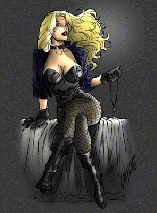 It was close to ten when he came over to the cocktail station, rested his chin on the flat bridge of his clasped fingers and whispered, "If it doesn't pick up soon..." I wondered how I could have failed to detect his unmistakably queeny Baltimore drawl all evening. "I'm going to have to start doing shots of Jagermeister." He arched an eyebrow theatrically.
It was close to ten when he came over to the cocktail station, rested his chin on the flat bridge of his clasped fingers and whispered, "If it doesn't pick up soon..." I wondered how I could have failed to detect his unmistakably queeny Baltimore drawl all evening. "I'm going to have to start doing shots of Jagermeister." He arched an eyebrow theatrically.
What else could I say? "Oh my god... me too!"
We've all been 18, so I think you know how this story goes. The next day when I came in to work I was paralyzed with fear that the evening's half-remembered antics had gotten back to my boss. I felt certain that he was waiting to pounce, lecture, humiliate and ultimately fire me for my epic lack of judgment. The reason I was so sure this would happen is that the last thing I did clearly remember was the boss' daughter joining us at the bar just before midnight. Superficially generous and deceptively gorgeous though she was, I never made the mistake of letting my guard down around her. She was only a year older than me but the combination of charmed genes and lousy upbringing had made her utterly amoral and ruthless and she was the catalyst for more than a few bartenders disappearing without a trace. I didn't lose my job that night, though, nor did I ever get that drunk, or that stupid, at work again.
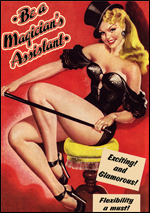 Which is not to say that I never drank at work again. Everybody drank, especially the bartenders, who drank Grand Marnier because it was the most expensive open bottle on the shelf, and the more the owner pissed them off, the more they drank. Sometimes the owner and his wife would come into the club — never on the same night, of course — and they would sit at the bar drinking and talking and laughing with the wait staff. They both had a way of charming people but no one took them seriously as "one of the gang." She was 5'10" and dressed like Cruella de Ville — and I mean always — I don't think the woman owned a pair of jeans. As for him, even at his most carefree and charming, he wasn't the kind of person who put others at ease. You'd stand there and chat, laugh at his jokes, but you never felt comfortable and the more he tried to act like a "regular guy," the more nervous it made everyone. It was like having drinks with a Joe Pesci character. He would be laughing his ass off about something, with his head thrown back and his hands pounding the brass railing on the bar surrounded by four of his employees who were just standing there frozen, looking deeply concerned and somewhat nauseous.
Which is not to say that I never drank at work again. Everybody drank, especially the bartenders, who drank Grand Marnier because it was the most expensive open bottle on the shelf, and the more the owner pissed them off, the more they drank. Sometimes the owner and his wife would come into the club — never on the same night, of course — and they would sit at the bar drinking and talking and laughing with the wait staff. They both had a way of charming people but no one took them seriously as "one of the gang." She was 5'10" and dressed like Cruella de Ville — and I mean always — I don't think the woman owned a pair of jeans. As for him, even at his most carefree and charming, he wasn't the kind of person who put others at ease. You'd stand there and chat, laugh at his jokes, but you never felt comfortable and the more he tried to act like a "regular guy," the more nervous it made everyone. It was like having drinks with a Joe Pesci character. He would be laughing his ass off about something, with his head thrown back and his hands pounding the brass railing on the bar surrounded by four of his employees who were just standing there frozen, looking deeply concerned and somewhat nauseous.
It lasted almost a year and eventually ended as I probably should have known it would; on a Friday night, with a drastic, untenable rearranging of my schedule and a take-it-or-leave it ultimatum from the owner. He even followed me out of the office where the schedule was posted, baiting me to argue with him in the lobby which was already filling up with overdressed patrons waiting in front of the red velvet ropes of the Renaissance. All I could say was, "No, I won't be back." As if he didn't know.
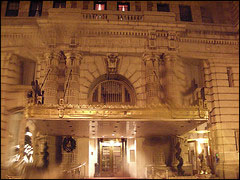 Much later, I found out that the business was in such trouble, financially and with the condo owners, that the club was shut down and in a desperately misguided attempt at "re-branding," the Owl Bar was again reopened under a different name as a southwestern-style grill. It lasted about six months; business plummeted, reviewers were merciless and the owner finally relented a year later, returning the bar to its familiar dark wood, brass and stained glass and the owls to their rightful roost.
Much later, I found out that the business was in such trouble, financially and with the condo owners, that the club was shut down and in a desperately misguided attempt at "re-branding," the Owl Bar was again reopened under a different name as a southwestern-style grill. It lasted about six months; business plummeted, reviewers were merciless and the owner finally relented a year later, returning the bar to its familiar dark wood, brass and stained glass and the owls to their rightful roost.
The Owl Bar is still there today and, surprisingly, the 13th Floor remains open and little changed. It hosts a successful Salsa night and is still recommended on several local "Top 100 things to do in Baltimore" lists. This one from Baltimore Magazine is rather charming:
"At some point in your life, you deserve to drink a grown-up cocktail in a place where a grown-up would drink a cocktail. Ride the elevator to the 13th Floor at the Belvedere Hotel and step back in time. Years ago, there was a jacket-and-tie requirement here. Those days are over, but the leopard-print carpet speaks to a bygone era. [O]rder a martini, Manhattan, or something along those lines. Take a seat by the big window and watch the day come to an end in a most civilized fashion." — Baltimore Magazine, City Guide 2009
Mad Men, the television show about advertising executives set in the early 60s, recently filmed its third season premiere at the Belvedere, introducing the next generation to its Gilded Age charms and possibly prompting yet another reinvention by its latest proprietors. But it's not all sanitized retro-gazing at the Baltimore landmark, according to two recent news items:
"[S]ince the 2006 opening of the Suite Ultralounge bottle club in the Belvedere's basement... Residents complain of unruly patrons causing disturbances at all hours, and a spike in violence. In October, a man and a woman were shot and another man was stabbed in an attack linked to club patrons. And last weekend, two pedestrians were viciously assaulted in separate incidents..." — The Baltimore Sun, May 15, 2009
In another story from 2007, a business man was found dead in a unused meeting room at the hotel, having apparently crashed through the ceiling after a fall from the roof. The cause of death — which police were unable to conclusively rule a suicide or a homicide due to insufficient, conflicting evidence — remains a mystery.